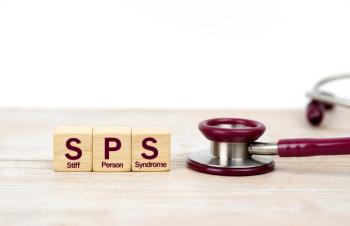
Glucose Lowering Medications Less Likely Among Medicare Advantage Beneficiaries
Commercial health insurance plan enrollees are more likely to take glucose-lowering medications.
Rates of initiation of glucagonlike peptide-1 receptor agonists (GLP-1RA), sodium-glucose cotransporter-2 inhibitors (SGLT2i), and dipeptidyl peptidase-4inhibitors (DPP-4i) are lower among Medicare Advantage enrollees than commercial health insurance plan enrollees.
The findings suggested a need to better understand nonclinical factors contributing to the treatment selection and efforts to promote equity in diabetes management.
Rozalina G. McCoy, M.D., M.S., and a team of investigators compared trends in the initiation of treatment with GLP-1RA, SGLT2i, and DPP-4i by older adults with type 2 diabetes insured by Medicare Advantage plans compared with commercial plans. They assessed deidentified administrative claims data from OptumLabs Data Warehouse or medical and pharmacy claims and enrollment records for commercial insurance plan and Medicare Advantage enrollees.
McCoy and colleagues included all enrollees with type 2 diabetes aged 58 to 66 years old who filled any medication prescription to lower glucose levels from Jan. 1, 2016 to Dec. 31, 2019. Among those in the GLP-1RA, SGLT2i, and DPP-4i groups, the index date was the first prescription fill for a drug in each class that was preceded by a 12-month period of uninterrupted coverage without a fill for any drug in the same class. For other patients, index was the first prescription fill of any drug preceded by 12 months of uninterrupted coverage.
Three separate logistic regression models were used to calculate the odds of initiating GLP-1RA, SGLT2i, and DPP-4i treatment.
The team identified more than 382,000 adults with pharmacologically treated type 2 diabetes, of whom, 172,180 were Medicare Advantage enrollees and 210,394 were commercial beneficiaries. Over the three-year study period, adjusted rates of initiation for a medication to lower glucose levels increased among all beneficiaries from 2.14% to 20.02% for GLP-1RA among commercial insurance beneficiaries and from 1.5% to 11.44% among Medicare Advantage beneficiaries. Rates increased from 2.74% to 18.15% for SGLT2i among commercial insurance beneficiaries and from 1.57% to 8.51% among Medicare Advantage beneficiaries, and from 3.3% to 11.71% for DPP-4i among commercial insurance beneficiaries and 2.44% to 7.68% among Medicare Advantage beneficiaries.
The team found initiation rates among all three drug classes were lower among Medicare Advantage than commercial insurance beneficiaries.
Within each calendar year of the three-year study period, the odds of initiating GLP-1RA treatment ranged from .28 (95% CI, .26-.29) to .70 (95% CI, .65-.75) for Medicare Advantage and commercial insurance beneficiaries, respectively. Odds varied in the SGLT2i cohort from .21 (95% CI, .2-.22) to .57 (95% CI, .53-.61), respectively; and DPP-4i, from .37 (95% CI, .34-0.39) to .73 (95% CI, .69-.78), respectively (P <.001 for all).
Income was a factor that led to the increased use of GLP-1RA and SGLT2i.
It is important to better understand nonclinical factors contributing to treatment decisions in diabetes management, the investigators concluded.
The study, “
Newsletter
Get the latest industry news, event updates, and more from Managed healthcare Executive.


















































